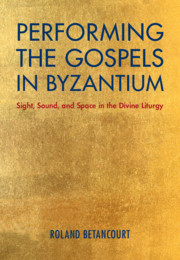Epilogue
Published online by Cambridge University Press: 12 March 2021
Summary
Following networks of iconographic iterations, semiotic permutations, and contextual associations, this volume has repeatedly traced ways in which image, text, and sound actively respond to a variety of contexts in the Divine Liturgy. I do not mean to suggest that all such meanings were prescribed by the original image or that they were evident to all audiences; rather, my point is that they unfolded procedurally through repeated use, flashing different facets of their polyvalence to various users over different times. This experience of slowly unfolding and of partial revelation is what I have attempted to convey through this volume’s litany of permutations, iterations, and nested chains of iconographic readings. This study provides a space for the transcription of a series of representations that emerge only through the contemplation of images, texts, and sound over time and in different contexts – at some times, as the result of long and studious contemplation; at other times, as the result of the cursory glance of someone in the process of reciting a text. My hope is that this volume has constantly expected and demanded that the reader make connections and associations between different works and viewing conditions, so that together they may all make possible the diverse understandings of these artworks’ spectrums of meaning. The lessons of these polyvalent and faltering images should spur us to think about the ever-withdrawing and perpetually complex nature of Byzantine art, demanding that we all become skeptical readers as we articulate the many possibilities that these images offer.
- Type
- Chapter
- Information
- Performing the Gospels in ByzantiumSight, Sound, and Space in the Divine Liturgy, pp. 284 - 286Publisher: Cambridge University PressPrint publication year: 2021

